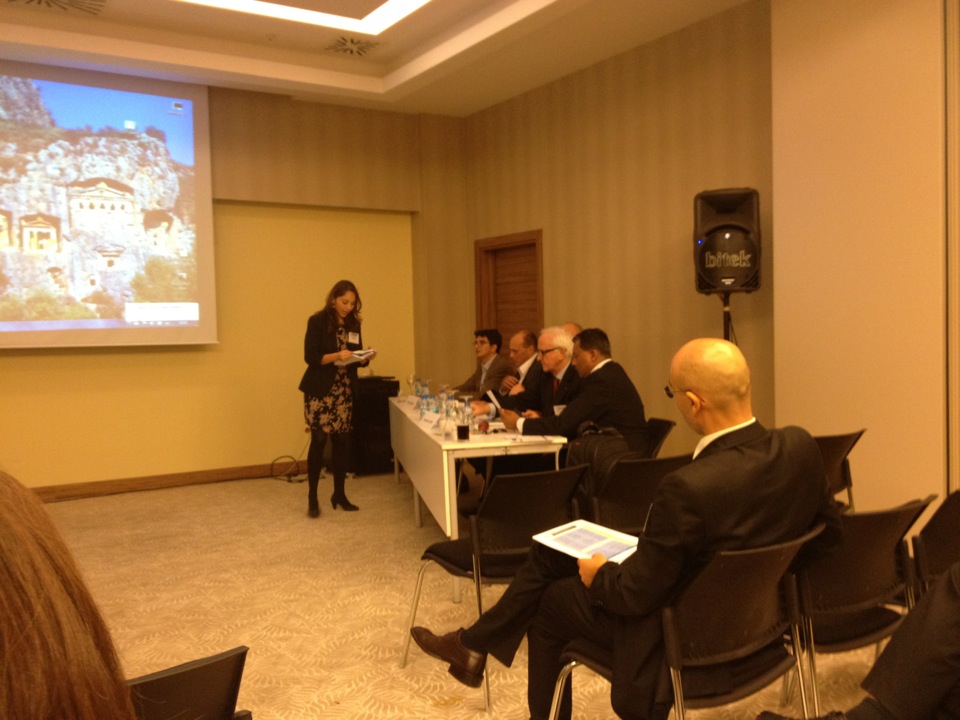1 Jan 2014
0 CommentsIce Storms Highlight Canada’s Obsolete Infrastructure
As we enter 2014, well into the 21st Century, one lesson for me from the year just past was that Canada seems to be hobbled with 19th century infrastructure. Let me explain.
During 2013, my home in Ontario was subject to not one, but two, different ice storms – in April and December. Both brought down large chunks of trees and both caused multi-day electrical power outages. In decades, this is the first time I can recall losing power for more than 1 day. To have this occur twice, with a combined 8 days of power outage, in a single year is even more striking.
After the first ice storm in April, I recall discussing this with a European colleague who was surprised by the very notion of a power outage. From a European perspective, he suggested the last power outage, of any length, that he could recall was 30 years ago. This started me thinking about why the difference.
In Canada, we have always prided ourselves on being one of the world’s richest countries, with modern infrastructure. However, much of our infrastructure was built for a different time and need. Much of it is really a testament to truly inventive Victorian design. It was indeed wonderful but no longer makes sense in the 21st Century. So, why indeed do we still have most of our electrical power lines above-ground on poles, while the rest of the (rich) world generally buries them? Why do our railways still rely on switches that freeze in winter and need to be operated by workers with propane torches? Why is a city like Toronto paralyzed by a major rainstorm?
Our homes, utilities, drainage and much more was built for a world predating our current period of rapid climate change. Surprisingly there remain in this world Luddites, who bizarrely continue to deny the fact of climate change. While we still have much to learn, on-the-ground results are here for all to see.
I gained significant insight into these issues when as a Director of Gore Mutual Insurance Company, a leading property insurer, I attended an enlightening presentation by the poignantly named Institute for Catastrophic Loss Reduction (ICLR). This industry-funded organization is a world leader, collaborating globally in research and advocacy around the causes and solutions for large scale insurance losses, known in industry jargon as a Catastrophe or even a Cat.
ICLR gathers data and works with many academic researchers to increase both understanding and awareness of what causes insurance losses. The data shows that the last ten years have seen huge increases in the number of severity of large scale losses, particularly from damaging wind, water and ice events, which are all significantly driven by climate change.
For example, with increased wind events (typically tornadoes in this area of Ontario), a call for more homes to be built with windows structurally rated to withstand 200 mph wind events makes sense.
Furthermore, climate change means that rainfall in 1 hour can equal what used to occur over 24 hours or more, with flash floods ensuing. In such an environment, instead of our historic practice of getting rid of water as quickly as possible, it is better to slow it down and buffer the potential for flash flooding.
For me, the power outages are a metaphor for how we in Canadian society need to look at our infrastructure with a sense of long term vision. We really need to invest to upgrade utilities, transportation and drainage for the needs of the 21st century. This in no way takes away from the heroic efforts of Hydro workers over the holiday season. I’m simply surprised that attention has never been focused on the root cause and long term prevention.
In an era of political infighting and embarrassing city Mayors, I’m wondering where the leadership necessary to achieve this will come from?
 A GO Train is stranded on flooded tracks in Toronto on Monday, July 8, 2013. THE CANADIAN PRESS/
A GO Train is stranded on flooded tracks in Toronto on Monday, July 8, 2013. THE CANADIAN PRESS/
.


 Pitching in Istanbul
Pitching in Istanbul

 Bob Ferchat – a Canadian mobile pioneer at the epicentre of the aforementioned world class Canadian telecom and mobile industry. Bob was CEO of Nortel Networks and later of Bell Mobility. Now retired, he has maintained a passion to continue Canadian mobile leadership. Most notably, a few months ago, he led a group of investors that tried to buy back Nortel to keep that treasure trove of technology intellectual property in Canadian hands
Bob Ferchat – a Canadian mobile pioneer at the epicentre of the aforementioned world class Canadian telecom and mobile industry. Bob was CEO of Nortel Networks and later of Bell Mobility. Now retired, he has maintained a passion to continue Canadian mobile leadership. Most notably, a few months ago, he led a group of investors that tried to buy back Nortel to keep that treasure trove of technology intellectual property in Canadian hands  Karna Gupta – From an early career in various senior executive positions at Bell Canada, Karna has held numerous and diverse C-level positions in global mobile and enterprise software companies, including Comverse, Sitraka Mobile and OSS Solutions. Most recently, he was CEO of Certicom through their recent acquisition by RIM, that also included fighting a hostile takeover bid. Karna brings a great international perspective from a diverse set of predominantly software-based initiatives.
Karna Gupta – From an early career in various senior executive positions at Bell Canada, Karna has held numerous and diverse C-level positions in global mobile and enterprise software companies, including Comverse, Sitraka Mobile and OSS Solutions. Most recently, he was CEO of Certicom through their recent acquisition by RIM, that also included fighting a hostile takeover bid. Karna brings a great international perspective from a diverse set of predominantly software-based initiatives. Steven Woods – Currently heading up Google’s Waterloo site, which has a significant mobile product mandate including search and GMail, Steve recently returned to Canada from a decade in the Silicon Valley. He was founder of NeoEdge Networks and co-founder of Quack.com (acquired by AOL), both Silicon Valley-Ontario operations. It would appear that Steve and his team are in the centre of the new web-based mobile world that Google is helping to shape.
Steven Woods – Currently heading up Google’s Waterloo site, which has a significant mobile product mandate including search and GMail, Steve recently returned to Canada from a decade in the Silicon Valley. He was founder of NeoEdge Networks and co-founder of Quack.com (acquired by AOL), both Silicon Valley-Ontario operations. It would appear that Steve and his team are in the centre of the new web-based mobile world that Google is helping to shape.


 Credit: AIAlex.com
Credit: AIAlex.com Unlike this sign, I don’t want to end this piece on a note of doom and gloom. Nor do I want to leave the impression that there aren’t very talented people in the Canadian VC industry. Nothing could be further from the truth – our long term VC gap arises from long term structural challenges, such as a lack of discipline as imposed by global LPs and not having reached the proper banker/operator mix. There are other factors, including the small population and large geography unique to Canada, but all can be and should be overcome with the proper model.
Unlike this sign, I don’t want to end this piece on a note of doom and gloom. Nor do I want to leave the impression that there aren’t very talented people in the Canadian VC industry. Nothing could be further from the truth – our long term VC gap arises from long term structural challenges, such as a lack of discipline as imposed by global LPs and not having reached the proper banker/operator mix. There are other factors, including the small population and large geography unique to Canada, but all can be and should be overcome with the proper model.
 Avvey Peters from Waterloo’s
Avvey Peters from Waterloo’s  Alec Saunders, CEO of one of Canada’s most promising web/mobile startups,
Alec Saunders, CEO of one of Canada’s most promising web/mobile startups,  Peter Childs, an Ottawa social media strategist and tech luminary, has laid out a framework
Peter Childs, an Ottawa social media strategist and tech luminary, has laid out a framework 
 Proper Economic Stimulus Can Lead To …
Proper Economic Stimulus Can Lead To … Significant Carbon Reduction
Significant Carbon Reduction
14 Jan 2014
0 CommentsThe Group of Seven – Nation Building for the 21st Century
Last year, I signed up for a wonderfully ambitious initiative spearheaded by our Governor General, His Excellency David Johnston. I was invited to join a Group of Seven who will serve as catalysts to rolling out David Johnson’s vision of a Smart and Caring Nation built by a set of Smart and Caring Communities, ultimately aimed to be a major national initiative to commemorate Canada’s 150th birthday, or sesquicentennial, in 2017.
I was very much honoured to be asked and, although it is a dauntingly large not to mention a somewhat unspecified, goal, as a proud Canadian who knows first hand David Johnston’s unique ability to lead and motivate, I quickly agreed to this call. I’ll share more about this initiative in order to seek your input. Since no small group can be representative of our huge and diverse nation, it is important the we engage in much dialogue from Canadians of all ages and demographic profile, in order to achieve maximum impact and relevance.
As a way to start that conversation, I’d like to share some of my perspectives on Smart and Caring 2017.
David Johnston’s Smart and Caring Vision:
This whole project starts with a great foundation in our Governor General’s Smart and Caring vision for Canada. And here is why his singular leadership is so critical to this initiative.
David Johnston has a long track record of motivation. Back in 2006, as President of Unviersity of Waterloo, he challenged the already ambitious and successful business, community and government leaders in Waterloo Region to reach even higher. Issued in November 2006, his Ten Goals to Make Waterloo Region Canada’s Knowledge Capital are a blueprint that inspired and motivated real change and continue to have an impact today.
Similarly, on 1 October 2010 at his installation speech as Governor General in the Senate Chambers in Ottawa, David Johnston laid out his vision for nation building in Canada, challenging us to build a Smart and Caring Nation:
To build on that vision as we near the sesquicentennial of Canada as a country in 2017, His Excellency has challenged Community Foundations of Canada and the growing network of 191 grass roots Community Foundations across our country. He wants them to lead a groundswell movement, in each and every community and nationally, for Smart and Caring 2017.
Canada – A History of Evolutionary Nation Building:
With that vision as inspiration, and as a passionately proud Canadian, here is my perspective on Canada as a nation. We were not formed by revolution, as is the case in many other countries like the USA or France. True to our character, our particular style of nation-hood opted instead for evolution at a slow almost glacial pace. You might almost say that Canada pioneered nation building by committee. Specifically, a series of meetings commencing with the Charlottetown Conference, 150 years ago in 1864, led to Confederation on 1 July 1867.
I would argue that, as a nation, we were more defined by what we were not — ie. no tea parties or revolutions to overthrow a king. Instead, via peaceful change we enjoyed a tabula rasa upon which to architect a unique nation in those lands north of the growing United States of America. The process was slow. We remained essentially a colony with large parts of the country feeling more British than Canadian for many years. Consider how long it took us to have a non-British Governor General (Vincent Massey, 1952), our own flag (1965, replacing the Union Jack) or our own constitution (repatriated from Westminster in 1982).
Until the late 20th century, innumerable British colonial vestiges remained. Many people argue that Canadian heroism and sacrifices for the motherland in World War I, just 100 years ago, started the modern trend of a strengthening Canadian identity both internally and as a nation on the global stage.
Canada’s Centennial in 1967 marked a major inflection point for Canada. We had come through two world wars with a strong sense of national identity, supported by the burgeoning post war economy. Canada proudly led on the world stage with the likes UN Peacekeeping, Expo ’67 in Montréal and the uber cool federalist Prime Minister Pierre Elliot Trudeau.
Set right in the middle of the swinging 1960’s, our centennial celebrations in 1967 were a wonderful time to be alive. Besides Expo ’67 and the quaint historical “centennial” costumes people wore, today we are left with innumerable Centennial arenas, parkways, libraries, etc. These major investments in infrastructure are present with us today. I recall that time with pride and fondness.
CFC Smart and Caring Project:
Because the 21st Century seems so different than the previous, what kind of movement should honour Canada’s 150th birthday. It is a complex question, but I believe that if we can mobilize almost all communities across Canada into activities and projects inspired by the “Smart and Caring” mantra, like a national pot luck dinner we would effectively crowdsource some of national, and even, international significance.
Once again, we have a unique opportunity to make positive changes while setting a positive example for the world.
It is important to understand that, because each and every community is unique, communities must have the freedom to launch initiatives that directly suits their unique needs. Nonetheless, with diverse initiatives considered collectively, I believe that, taken as a whole we can shape and inspire the Canada of the future. We have so many advantages and the time is right to embark of nation building for the 21st century.
I would further hope that we would see collective action and partnership, both at the community level and national level, to increase the impact and effectiveness of the Smart and Caring 2017 initiatives. We must speak to and be meaningful to all Canadians:
Because no group, no matter how large, can be sufficiently inclusive, that is why it is absolutely imperative that we, who have been honoured to help make this happen, hear from as many Canadians as possible.
Please weigh in here with comments or find other ways to get involved. And, I hope to provide more updates and opportunities to engage, participate, shape and drive Canada’s 150th birthday celebrations – Smart and Caring 2017.Please start by sharing your thoughts on what Smart and Caring 2017 means to you.